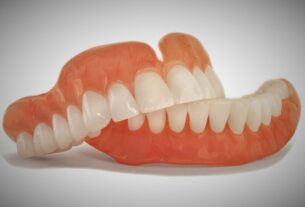
Global Atherectomy Devices Market Overview
The global atherectomy devices market is expected to witness substantial growth, with a projected CAGR of around 8% during the forecast period. Several key factors are driving this growth, including the rising prevalence of peripheral artery disease (PAD) and coronary artery disease (CAD), the increasing aging population, and the growing incidence of lifestyle-related disorders such as diabetes and obesity. Additionally, the market is being boosted by the expanding preference for minimally invasive procedures, which provide safer and faster recovery compared to traditional surgeries.
Get Free Sample Report: https://meditechinsights.com/atherectomy-devices-market/request-sample/
The proliferation of outpatient and ambulatory surgical centers has further enhanced the accessibility of atherectomy procedures, creating a favorable environment for market expansion. Despite this optimistic outlook, the high cost of advanced atherectomy devices and related procedures continues to limit their adoption in certain regions, particularly in low- and middle-income economies where healthcare budgets are constrained.
Understanding Atherectomy and Market Fundamentals
Atherectomy is a specialized minimally invasive procedure designed to remove atherosclerotic plaque from the inner walls of blood vessels. The technique is widely used for patients suffering from peripheral artery disease (PAD) and coronary artery disease (CAD), where plaque buildup restricts blood flow and can lead to serious complications such as heart attack, stroke, or limb ischemia. Unlike traditional bypass surgery, atherectomy involves the use of catheter-based, image-guided medical devices that mechanically remove the blockage, restoring normal blood circulation while preserving the natural structure of the vessel. The market comprises four main types of atherectomy systems—directional, rotational, orbital, and laser-based devices—along with associated accessories and disposable components that support vascular interventions. Before performing an atherectomy, diagnostic tools such as Doppler ultrasound, angiography, magnetic resonance angiography (MRA), and computed tomography angiography (CTA) are used to locate and evaluate plaque deposits precisely. These complementary technologies enable physicians to determine the most effective treatment approach, ensuring patient safety and optimal outcomes.
Rising Demand for Minimally Invasive Treatments Driving Market Growth
The growing preference for minimally invasive treatments is a major factor propelling the demand for atherectomy devices worldwide. Patients and clinicians alike are increasingly favoring procedures that offer faster recovery, shorter hospital stays, lower complication rates, and improved quality of life. Atherectomy stands out as a superior alternative to open surgery, as it minimizes trauma to the arterial wall, reduces postoperative pain, and significantly decreases the likelihood of restenosis. One of its most notable benefits is that it can often eliminate the need for stents or bypass grafts, preserving the integrity and flexibility of the blood vessel. Moreover, advancements in catheter design, imaging technologies, and guidewire control have made atherectomy procedures safer and more precise, expanding their suitability across a wider range of patients. The global rise in peripheral artery disease, particularly among the elderly and diabetic populations, has further amplified the need for effective and less invasive revascularization techniques. These trends, combined with increasing regulatory approvals for innovative device designs, are fueling the widespread adoption of atherectomy as a standard treatment modality in vascular care.
AI-Driven Robotics and Combination Therapies Accelerating Market Innovation
Technological innovation is reshaping the landscape of the atherectomy devices market, particularly through the integration of artificial intelligence (AI), robotics, and combination therapies. AI is increasingly being applied in image-guided atherectomy procedures, enabling real-time analysis, enhanced lesion visualization, and intelligent navigation systems. These AI-powered tools assist clinicians in making data-driven intraoperative decisions, improving both procedural accuracy and patient safety. Robotics has also emerged as a transformative force, offering unparalleled precision in catheter control, reducing operator fatigue, and enabling physicians to perform complex interventions with greater consistency and efficiency. Together, AI and robotic technologies are ushering in a new era of automation and standardization in vascular care. Another noteworthy development in the market is the rise of combination therapy strategies, which involve using drug-coated balloons (DCBs) following an atherectomy procedure. This sequential approach enhances drug penetration into the vessel wall, reducing neointimal hyperplasia and lowering the risk of restenosis. Clinical studies have demonstrated that the combination of atherectomy and DCB therapy significantly improves long-term outcomes compared to balloon angioplasty alone. These innovations are setting new benchmarks in treatment efficacy, shaping the future of vascular intervention, and driving sustained demand for advanced atherectomy systems.
Market Challenges and Limitations
While the market outlook remains strong, certain challenges continue to impede widespread adoption. The primary concern is the high cost associated with advanced atherectomy devices, including maintenance and disposable accessories. These costs often limit their use in cost-sensitive healthcare systems. Additionally, the need for specialized operator training and the risk of procedural complications in complex cases present barriers to growth. Regulatory approvals and re

